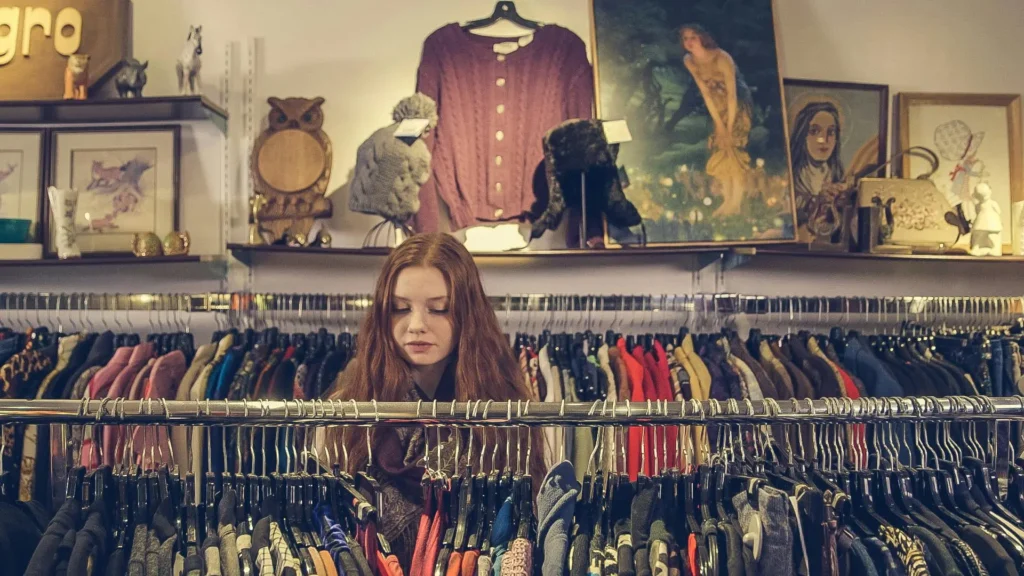Online Thrifting vs. Traditional Thrifting: Which One Saves You More Money?
FEBRUARY 3, 2025
Thrifting has long been a favorite way to shop for those looking to save money, find unique pieces, and reduce their environmental impact. However, with the rise of digital marketplaces, online thrifting is revolutionizing the secondhand shopping experience. So, how does online thrifting compare to traditional thrifting? And how does both help combat the fast fashion crisis?
The Environmental Impact of Fast Fashion
Before we compare the two ways to thrift, it’s essential to understand why thrifting—whether online or in-person—is crucial for the planet. The fast fashion industry is one of the biggest polluters in the world, accounting for 10% of global carbon emissions, more than international flights and maritime shipping combined. It also produces 92 million tons of textile waste annually, with much of it ending up in landfills or being incinerated. Additionally, 20% of global wastewater comes from fabric dyeing and treatment.
By choosing secondhand, shoppers reduce demand for newly manufactured clothing, extending the lifespan of existing garments and preventing them from becoming waste. Whether you thrift online or in-store, you’re actively contributing to a more sustainable future.
What is Online Thrifting?
Online thrifting is the digital version of secondhand shopping, allowing you to shop for pre-owned clothing, accessories, and more from the comfort of your home. Platforms like ThredUp, Depop, Poshmark, Etsy, and eBay offer a wide range of pre-loved items, making it easier than ever to find unique pieces without leaving your couch.
These platforms give you access to a variety of secondhand goods, from high-end brands to budget-friendly options, and often allow you to filter your search by size, brand, color, and condition. With just a few clicks, you can explore an extensive selection of items from all over the world, ensuring you’re never limited by your local store’s inventory. Plus, many of these platforms give you the opportunity to resell your own items, creating a circular economy where items are reused and loved again.

Benefits of Online Thrifting:
Convenience: Shop from anywhere, anytime. No need to visit multiple stores.
Wider Selection: Access secondhand items from all over the world.
Searchability: Quickly find specific brands, styles, or trends with search filters.
Resale Opportunities: Many platforms allow you to resell your own items, creating a circular economy.
Cons of Online Thrifting:
Shipping Fees: Additional costs can add up, especially for smaller or budget-friendly items.
No Try-On Option: You can’t physically try on items before purchasing, which may lead to sizing issues.
Inaccurate Listings: Descriptions or photos may not always match the item, leading to potential disappointment.
Environmental Impact: Shipping items from far locations can increase your carbon footprint.
Traditional Thrifting: The Classic Shopping Experience
For those who love the thrill of the hunt, traditional thrifting offers a hands-on experience that’s hard to beat. Local thrift stores, vintage shops, and flea markets provide the chance to physically inspect, try on, and experience items before making a purchase. It’s all about discovering hidden gems and enjoying the process of sifting through unique finds in person.

Benefits of Traditional Thrifting:
Lower Prices: Many thrift stores offer unbeatable deals compared to online listings.
No Shipping Costs: You take your finds home immediately, without waiting or paying extra fees.
Surprise Factor: You never know what hidden treasures you might stumble upon.
Supporting Local Causes: Many thrift stores support charities and community programs, giving your purchase a purpose.
Cons of Traditional Thrifting:
Time-Consuming: Thrift stores can be overwhelming, and finding the right pieces often requires a lot of time and patience.
Limited Inventory: Your local stores may not always have what you're looking for, or you might have to visit multiple locations.
Not Always in Perfect Condition: Some items may show more wear and tear than you'd find online.
No Try-At-Home Option: While you can try things on in-store, you're still limited to what's available and may not always find your size or style.
Which is Better?
Both online and traditional thrifting have their strengths. If you value convenience, selection, and accessibility, online thrifting is your best bet. If you enjoy hands-on shopping, lower prices, and instant gratification, traditional thrifting might be more your style. Either way, choosing secondhand over fast fashion helps reduce waste, lower carbon emissions, and support a more sustainable fashion industry.
So, whether you’re scrolling through online listings or browsing the aisles of a thrift store, remember that every secondhand purchase is a step toward a greener planet.
Happy thrifting!
The Ultimate Guide to Thrifting
Learn How to Make Money from Thrifting to starting your own thrift store.

Get List of Top Selling Items
List of Easiest Items to Flip
List of Rare Items to Look For
Picture Guide to visually identify the items
Learn How to Sell Items on Ebay, Marketplace, Etsy & Poshmark
Get Exclusive Tips & Free Resources!
Sign up with your email to join our mailing list.
